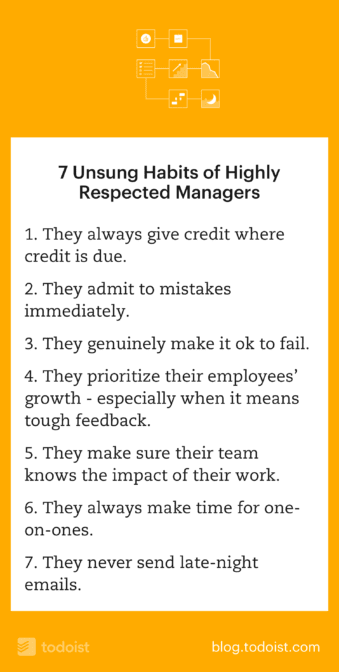I used to be skeptical of people who claimed that they loved their jobs.
Upon graduation from college, the sum total of my “relevant” work experience had included a few summer internships during which I discovered just how long the hours between lunch and 5pm can stretch.
The vast majority of the adults I knew seemed to tolerate their jobs at best, and absolutely dread them at worst.
All I had to do was look at the official numbers to confirm my suspicions; a 2013 Gallup poll found that just 13% of employees worldwide feel engaged at work..
Was it really possible to look forward to Monday morning? I had my doubts.
But then I became one of those weirdos who love their jobs. Really. Now when people ask me what I do, I find myself gushing to an embarrassing degree about my job, my company, my coworkers, for far longer than anyone is really interested in listening.
It got me wondering:
What’s different for that 13% of people who are engaged in their work? Why have I felt completely unmotivated in jobs in the past, but can’t wait to take on new challenges in my current role at Doist?
Of course there are a lot of factors at play. The nature of the work itself and a flexible remote work schedule are great, I can’t deny that. But I don’t think that tells the whole story.
Regardless of what you do or where you work or the perks you get, there’s one looming variable in the equation that often makes the key difference between a job you love and a job you dread: your boss.
Climbing the corporate ladder to become a manager – it’s the career path that’s held up as the gold standard for success in the workplace. Yet few people truly appreciate the responsibilities that come with moving into a management role. Anyone who has ever had the misfortune of having a bad boss knows how much management can affect your motivation and overall mental well-being at work.
In many ways managing people is still an imprecise art, yet years of research and collective experience reveal some of the concrete actions that separate bad or even good managers from the truly exceptional ones. Here are seven key habits that set them apart…

1. They always give credit where credit is due.

Ultimately, a manager’s job is to help their employees be successful at theirs. Rather than trumpet their own accomplishments, great managers see it as their job to recognize and magnify the accomplishments of their employees.
Job satisfaction research shows that praise and appreciation are powerful drivers of positive work culture and high employee engagement. A Gallup Organization survey of over 4 million employees from more than 10,000 businesses across 30 industries worldwide found that individuals who received recognition and praise in their jobs:
- Reported higher personal productivity
- Were more engaged with their colleagues
- Were less likely to quit their jobs
- Received higher loyalty and satisfaction scores from customers
- Had better safety records and fewer accidents on the job
In fact, according to Gallup, variation in response to the [question] “In the last seven days, I have received recognition or praise for doing good work” is responsible for a whopping 10% to 20% difference in revenue and productivity.
Yet fewer than 1 in 3 employees responded yes to that question.
These survey results are in-line with current research into workplace productivity and team culture. Celebrating progress – even small wins – has been shown to boost employee mood, engagement, and work performance.
At the same time, numerous studies have shown that cultivating a culture of gratitude in the workplace can increase happiness, reduce stress, boost employee motivation and performance, and foster a more collaborative work environment.
Showing appreciation doesn’t mean you should coddle your employees or give out participation ribbons left and right. Great managers know that praise is only as effective as it is authentic. As Dale Carnegie put it in the classic management book How to Win Friends and Influence People:
The difference between appreciation and flattery? That is simple. One is sincere and the other insincere. One comes from the heart out; the other from the teeth out. One is unselfish; the other selfish. One is universally admired; the other universally condemned.
Praise loses all meaning if it’s not sincere, and your high-performing employees will sense insincere flattery from a mile away.
How to develop the habit:
It’s easy to get caught up in your own work. Make recognition and appreciation a habit. Build reviewing your team’s accomplishments into your routine at the end of every day or week. Another approach is to set aside time in your weekly meetings for team members to recognize accomplishments and/or thank a colleague for something they did in the past week.
Be careful not to only focus on the big accomplishments. Our brains are wired to notice events that deviate far from the norm, either positively or negatively. That means we often overlook the essential, behind-the-scenes work that keeps things running smoothly, and the small wins that lead to big successes. Build momentum on your team by making a conscious effort to recognize those under-appreciated, everyday actions.
2. They admit to mistakes immediately.
Great managers understand that there are no shortcuts to building trust with a team. Creating strong work relationships built on mutual respect and trust requires a willingness to be vulnerable.
Our image of an ideal leader is someone who is strong, fearless, and infallible, yet research shows that vulnerability forms the basis for all strong relationships. Workplace relationships are no exception. (If you’re skeptical, I highly recommend watching Brené Brown’s powerful TED Talk The Power of Vulnerability.)
Far from being a weakness, showing vulnerability builds trust and empathy. From a management perspective, it fosters a culture of openness and leads to greater employee engagement. Simply put, candid transparency earns trust and respect. That’s why effective leaders see mistakes as opportunities to hold themselves accountable to their teams and, in doing so, build a stronger workplace culture.
Jim Whitehurst, President and CEO of Red Hat, learned this powerful lesson when he took responsibility for a mistake he made that delayed a product launch by more than a year:
Of course, there was quite a bit of anger and frustration among Red Hatters about the extended delay. But I owned it. I put myself out to the company and my board of directors by admitting I was wrong and that we were going to do our best to address the mistake…
Many Red Hatters told me how much they appreciated that I admitted my mistake. They also appreciated that I explained how I came to make the decision in the first place. That earned me their trust. If you want to have engaged employees, in other words, you need to explain why decisions were made. That’s how you build engagement—which also makes you a stronger leader.
How to develop the habit:
When you’ve made a mistake as leader, the worst thing you can do is ignore it or make excuses. With zero communication, employees are left to fill in the blanks by themselves. They might assume that you’re either incompetent or just don’t care, both of which undermine mutual trust and respect with your team.
Instead, follow Whitehurst’s example. Recognize the mistake publicly, either with an internal memo or in a team meeting. Explain the rationale behind your decisions; breakdown where things went wrong and how you could have handled it better. Make clear your commitment to learning from your mistakes in the future.

3. They genuinely make it OK to fail.
Over the past decade, “Fail harder. Fail faster.” has become a central principle of modern business management.
The freedom to take risks is vital to building a learning culture that fosters creativity and innovation. It allows teams to ship projects faster, knowing that they don’t have to guarantee perfection. Removing the stigma of failure helps employees feel more confident growing in their roles, taking on new responsibilities without the fear that their job is on the line if they mess up.
On the other hand, fear of reprisal corrodes team trust and leads employees to play it safe and maintain the status quo. Yet, pointing fingers is a hard habit to break on many teams. Office politics has an inertia of its own. When a project tanks, our natural instinct for self-preservation kicks in. We begin to look for someone to take the fall.
Saying that it’s ok to fail doesn’t make it so. To build a culture that embraces the possibility of failure in order to accomplish great things, it takes great managers who are willing to not play the blame game when things go badly.
This doesn’t mean giving employee carte blanche to take any and all risks. When avoidable mistakes are made, your team needs to be held accountable. When there are areas that need improvement, it’s a manager’s job to communicate that to their team members. However, instead of playing the blame game, respected managers build trust and encourage creative risk taking by turning failures into learning experiences.
One extreme example of embracing failure are the “Heroic Failure Awards” given to employees at Grey, a leading New York-based advertising agency.
Tor Myhren, worldwide chief creative officer at Grey and creator of the failure award, is intimately familiar with failure. In 2006 he oversaw the creation of what has since been referred to as “the worst Super Bowl ad ever”. That experience drove home the value of embracing the possibility of failure and taking risks anyway:
[I had] a big public failure and, having gone through that, I really admired the people that supported me and especially admired the people who gave me the chance the next year to try to do it again.
He certainly seems to be onto something. Since Myhren joined Grey in 2010 the agency has tripled in size while winning the highest accolades from leading industry publications like Adweek and Advertising Age.
How to develop the habit:
Instead of blaming team members for failure, recognize and praise individuals who take creative risks, especially when they turn out badly. Recognition could take the form of an official award, an internal memo, or just a well-placed comment in a team meeting.
Another great tool for fostering a culture that embraces the possibility of failure is the post-project or mid-project review. Whether things went well or turned out terribly, always schedule a meeting at the close of projects or the end of a project stage.
Regardless of what the ultimate outcome, frame the exercise as a learning experience. Have everyone involved come with their thoughts on what went well, and their ideas for what they would do differently next time. Make sure to ask what you as a manager could have done to better support them.
Here’s a great article from digital marketing agency Portent that walks you through how to run a better “post-mortem”.
4. They prioritize their employees’ growth – especially when it means giving tough feedback.
Of course, making it ok to fail, doesn’t mean you never give bad feedback to your employees. In fact, if there’s something a team member can improve upon, you’re doing them a disservice by not helping them grow in their skills and responsibilities.
In an article published by First Round Review, organizational coach Kim Scott remembers how she learned to appreciate what she calls “radical candor” at Google. After giving a big presentation during her time at Google, her boss, Sheryl Sandberg, asked her to go for a walk.
[Sheryl] talked about the things she’d liked about the presentation and how impressed she was with the success the team was having — yet Scott could feel a “but” coming. “Finally she said, ‘But you said um a lot.’ And I thought, ‘Oh, no big deal. I know, I do that. But who cared if I said um when I had the tiger by the tail?’”
Sandberg pushed forward, asking whether Scott’s ums were the result of nervousness. She even suggested that Google could hire a speaking coach to help. Still, Scott brushed off the concern; it didn’t seem like an important issue. “Finally, Sheryl said, ‘You know, Kim, I can tell I’m not really getting through to you. I’m going to have to be clearer here. When you say um every third word, it makes you sound stupid.’
It was tough feedback to hear, but it got Scott’s attention; she ended up getting that speaking coach. More importantly, she learned that great managers need to be prepared to give direct guidance to help both their employees and their teams become more successful:
Radical candor is humble, it’s helpful, it’s immediate, it’s in person — in private if it’s criticism and in public if it’s praise — and it doesn’t personalize.” That last P makes a key distinction: “My boss didn’t say, ‘You’re stupid.’ She said, ‘You sounded stupid when you said um.’ There’s a big difference between the two.
How to build the habit:
Be proactive about working with your employees to identify areas that they want or need to improve in. Come up with a focused, quarterly plan for professional development to help them gain the skills they want or need to learn.
Are there other employees at the company who already have that skill set who could help mentor them or give them advice on how to proceed? Are there courses, conferences, coaching, or books that they can get information from? Give them the resources to learn and improve.
Address any ongoing issues immediately and directly, and be ready to help them come up with a solution.

5. They’re committed to removing their employees’ roadblocks.
If celebrating small wins is the key to improving employee motivation and engagement, then encountering roadblocks is what kills them.
That’s what Teresa Amabile and Steven J. Kramer have found in their research on workplace productivity. They conducted a study of over 238 individuals from twenty-six different project teams across seven companies, asking them to record and rate various aspects of their work every day. Setbacks occurred on 67% of “bad days” while progress occurred on only 25% of them.
Much like giving praise doesn’t mean handing out participation ribbons, removing roadblocks doesn’t mean giving team members free rein. There’s a lot of evidence to suggest that constraints on time and money actually breed more creativity.
However, to stay motivated and engaged, employees need to know that you’re in their corner to help them overcome the barriers that are keeping them from making any forward progress on their goals.
As Amabile and Kramer put it: “Effective managers establish themselves as resources, making sure to check in on employees while never seeming to check up on them.”
How to develop the habit:
Make a point every week to review your team members’ projects and goals. Ask yourself if there’s anything you can be doing to help them move their work forward. If you don’t know, simply ask how you can be of help. Let your team know that they can come to you at any time when issues arise. Back up words by taking decisive action when there is something you can do to remove a barrier in their way.
6. They always make the time for one-on-ones.
One-on-one meetings are at the center of strong communication and trust between manager and team member. They’re what make all of the other habits of respected managers possible.
You can’t identify your employees’ roadblocks if they don’t have the opportunity to talk them through with you.
You can’t help your employees grow in their roles and career if you don’t make the time to find out what their goals, interests, and strengths are.
At the same time, one-on-ones provide the perfect opportunity to recognize your team members’ accomplishments, make clear the connections between their work and the company’s overall success, and identify areas for improvement. Great managers see these meetings as invaluable opportunities to keep a finger on the pulse of their teams and be proactive about addressing issues.
Alex Turnbull, founder and CEO of the support software company Groove, says his biggest regret is not starting regular one-on-one meetings earlier:
Every two weeks, I’d block off eight hours to check in with everyone on the team.
We only talked briefly about what they were working on; the majority of each call was spent on how they’re feeling about Groove, the team, what challenges they saw us facing, how they felt about being a part of the team, and my performance as their CEO.
Eight hours is not a small investment, but it’s proven to be one of the most valuable uses of my time. The benefits have been tremendous, and I wish badly that I had been doing these from day one.
How to build the habit:
Set time on your calendar on a regular basis with each of your direct reports. Hold this time sacred. Turnbill urges managers to use one-on-ones to ask directly for feedback on your own performance and to come prepared with specific questions. He recommends Jason Evanish’s list of questions for one-on-ones for inspiration.
7. They don’t send late-night emails.
There’s a growing amount of research that shows that employee health and happiness isn’t just a “nice-to-have” at work; fostering a well-balanced team actually has a significant impact on the bottom line.
In his popular Ted Talk, positive psychology expert and author of the Happiness Advantage Sean Achor explains that, while most of us believe that success will make us happy, it may actually be the other way around. Achor’s extensive research into high-performing outliers suggests that having a positive outlook to begin with improves our performance in many areas of our lives, including work. It may be that happiness is actually the key to success.
Taking the time to disconnect from work allows employees to recharge, relieves stress, promotes physical health, fosters greater creativity, and ultimately boosts workplace productivity.
Despite the resounding amount of hard evidence that working long hours lowers productivity, few companies actually manage to prioritize work-life balance for their employees. Again, it takes great managers to reinforce a culture of work-life balance and demonstrate with real actions that it’s a priority for the team.
If you as a manager, are sending late-night emails, it sets the expectation that your team members should be available to respond to them. If you respond to things while on vacation, it sends the message that your employees shouldn’t fully unplug either. Those who have risen to the ranks of management are driven people – exactly the type who stay late at work to get one more thing done. But effective managers recognize that their actions, not just their words, impact their entire team.
It’s also about taking care of yourself to make sure that you can perform to the best of your abilities for your team. The reality is, if you’re frustrated, stressed, and burnt out, you won’t be 100% when it comes to leading your team.
Organizational consultant Kim Scott says the first thing managers need to do is put on their own oxygen mask:
You can’t possibly give a damn about other people if you don’t give a damn about yourself. At one point, when I was having a very stressful period in my career, I realized that the most important thing I could do for my team was not hire great people. It was not to raise a lot of money. It was actually to take a run every morning.
How to build the habit:
There’s no shortcut here. You as a manager have to make work-life balance a priority rather than just a buzzword.
At Doist, our COO Allan Christensen has made it his mission to make sure that we take time to disconnect. Whenever anyone posts that they’ll be on vacation, but will be available on Slack if needed, Allan makes a point to hop on the thread with a friendly reminder to give themselves permission to fully disconnect. (I’ve actually drafted messages on weekends and waited to send them until Monday because I knew I would “get in trouble” with Allan if he sees that I’ve responded on a Saturday or Sunday.)
It’s not just about telling your team to disconnect. It’s also about actually disconnecting yourself. Make sure you leave work on time every day. If something comes to mind that you need to follow up on, don’t reflexively open your email. Instead, take a few seconds to jot it down in a task manager like Todoist and come back to it in the morning. Finally, take time for the activities that replenish your mental energy, creativity, and focus.
Our work lives have a huge impact on our health and happiness. Managers have a responsibility – not only to their companies but also to their team members – to create a workplace culture that keeps employees engaged in work they find meaningful.
It takes years and even decades of both missteps and successes to become an exceptional manager; there aren’t any shortcuts. But consciously building these seven habits are a good place to start.
We want to hear from you! Do you manage a team in your job? What are the most important management lessons you’ve learned along the way? Share your experiences in the comments below…
Protect your most important asset: Your team’s attention. Learn about Twist by the makers of Todoist.

